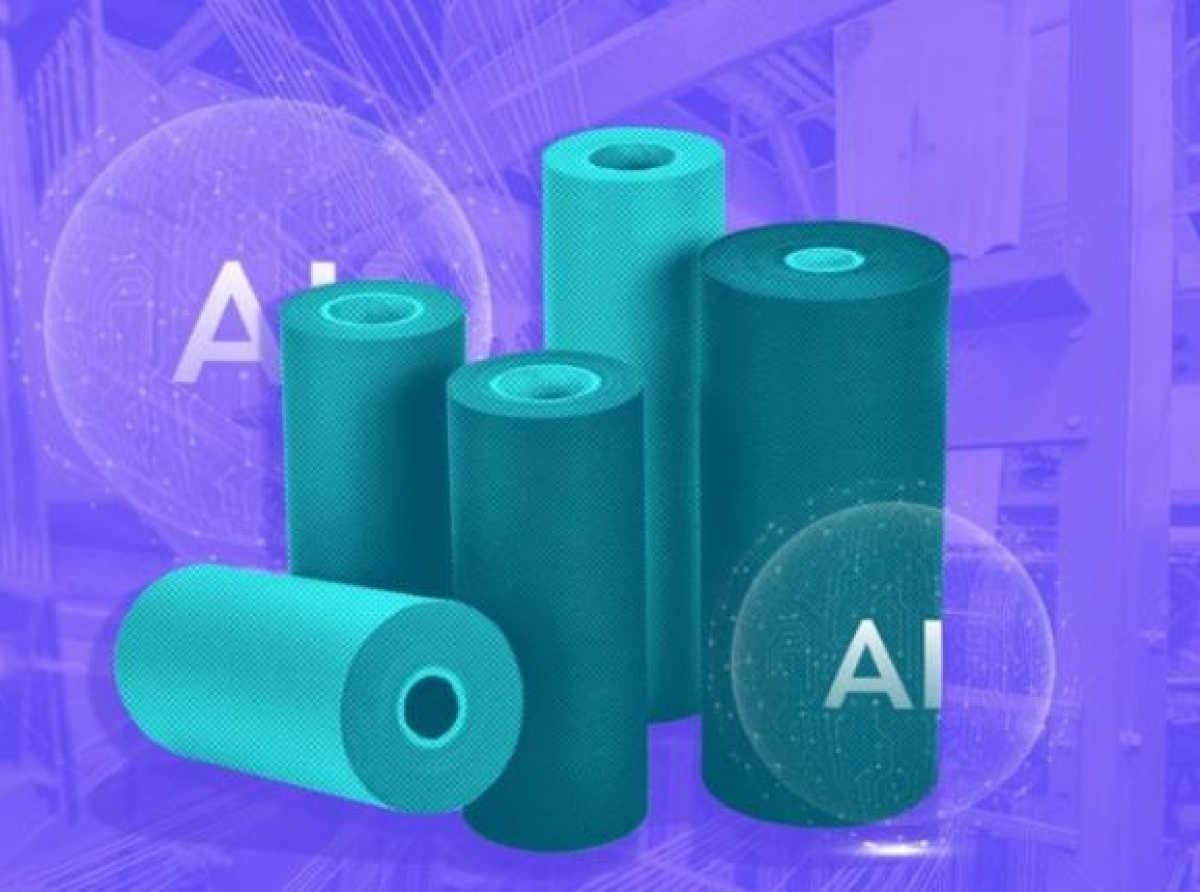21 February 2023, Mumbai
The formerly labor-intensive textile sector has transformed on the back of the steady adoption of AI and the internet of things (IoT). Nowadays, broadly it has been experienced that most textile companies use computerized equipment, which is far more effective than human laborers in producing precise patterns on a large scale.
Every day, new innovative apparel/clothing products are developed. Smart textiles can track and transmit the wearer's information, including biometric data like blood pressure, heart rate, sweat, temperature, and more, by integrating AI with technologies like Bluetooth Low Energy (BLE), edge computing, and cloud data.
Textile production is labor-intensive, which is predominantly a low-not-so-high fixed capital investment; characterized by a range of product designs and, hence, requisite input materials; variable quantum of production; the fierce need for competitiveness in the sector where there is the quantum of existing players across segments.
Semantics
The core idea of delving into the possibility of automation AIs of the world replacing human element will be orchestrated by, the labor-intensive processes, methodology as a pre-condition needs to be converted into automated processes achievable only by nothing else but the use of computers, tailored models, specified digital components, and artificial intelligence (AI)/IoTs to optimize production processes, reduce costs, and improve product quality.
Unleashed Technologies
This article will look at novel applications, how AI affects the textile industry, and why ultra-low-power (ULP) technologies are necessary to unleash AI at the endpoints.
AI is revolutionizing the whole manufacturing process and business practices for textile businesses. AI can access and gather past and current operational data, offering insights that can increase operational effectiveness.
It is simpler to adjust procedures to maximize the talents of human workers when you have a thorough understanding of your operations. AI impacts every process step, whether product cost, textile production, quality control, just-in-time manufacturing, data collecting, or computer-integrated manufacturing.
Defect identification, pattern inspection, and color matching are some frequently used AI applications in textile production.
Smart Apparel and its advantages
Smart garment/clothing and electronic sensing technologies like fitness trackers can help users lead healthier and more attentive lives. Yet, smart clothing can offer more physiological signal assessments since it has a broader area of contact with your body than a device like a smartwatch. Important biometrics, like our heart rate, may be continuously monitored with the help of smart clothes.
The possibility of long-term monitoring makes it easier for doctors to recognize or classify potential heart problems. With frequent monitoring over a longer time, smart clothing assists patients in gathering complete and comprehensive heart-related data, tracking long-term heart illness, and improving the identification and diagnosis of heart disorders.
AI in The Textile Industry
In addition to having a significant fixed capital investment, a broad range of product designs and input materials, unpredictable production volumes, high levels of competition, and frequently high demands on product quality, the textile manufacturing business is labor-intensive. Automating labor-intensive operations using computers, models, digital components, and artificial intelligence is the best way to meet these needs (AI). Artificial intelligence (AI) study focuses on creating and evaluating intelligent computational entities.
This proposition describes several uses of AI in the textile manufacturing sector. Moreover, it incorporates several AI techniques in producing textiles and clothing, such as expert systems, neural networks, fuzzy logic, evolutionary algorithms, and others.
Labor importance in the sector
Many of the world's most significant fashion, clothing, and apparel brands appear to have a sizeable portion of their products manufactured in Asian nations such as China, India, Bangladesh, Vietnam, etc., suggesting that garment and textile manufacturing has historically been a labor-intensive industry.
Over the previous two decades, when labor prices in Asian nations started to rise, a significant portion of the textile manufacturing industry's shift to the East occurred (notably China). Industrial automation is becoming more prevalent in the textile manufacturing sector, and companies with access to operational data from the past and present may use AI to boost productivity and expand the skill sets of their human employees.
Business case
AI adoption in the labor-intensive textile sector can definitely improve efficiency. To play devil's advocate machine learning algorithms can optimize material usage and detect defects, while robotic automation can take away jobs thus reducing reliance on manual labor.
Moreover, predictive maintenance can help minimize machine breakdowns, improving efficiency bar and uptime. There is merit in the argument that AI adoption can lead to a definitive enhancement in profitability and improved competitiveness in the industry.
The application of AI in the textile industry has the inherent possibility to transform a labor-intensive sector by sector super efficient and cost-optimization. The application spans the spectrum of fabric design to quality control, there is little surprise that AI can augment every step of the textile production process.
Considering the clear-cut upside, the adoption of AI in the textile industry is highly likely to amplify & step up in the coming years. Textile companies are nowadays started to well-leverage AI-powered systems to automate the design, prediction, and analysis of textile manufacturing, only resulting in substantial & meaningful gainful situations for the industry.
Latest Publications

































